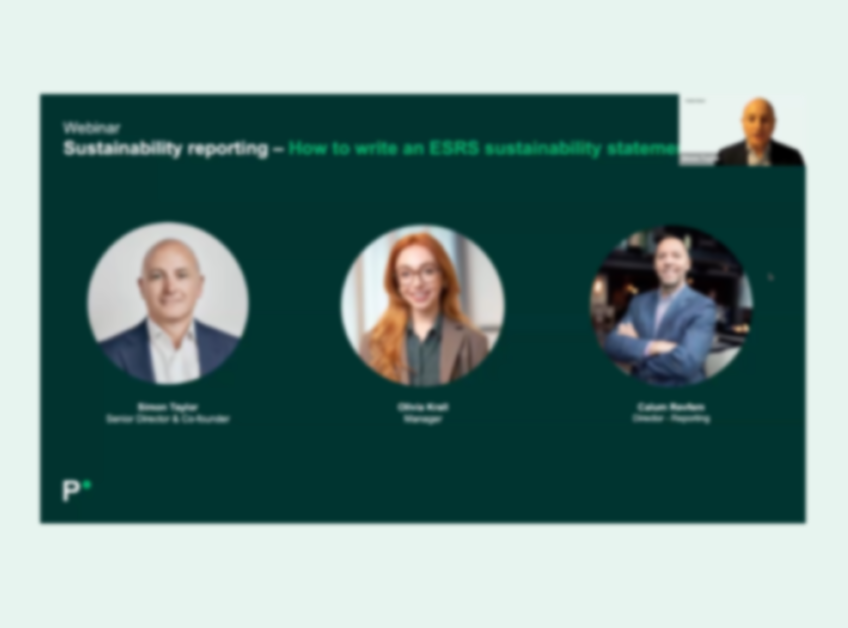How to write an ESRS sustainability statement
As the reporting season gets underway, many companies are looking at how to align their 2023 reports to the European Sustainability Reporting Standards (ESRS), while others are already looking ahead for insights on how to write their 2024 ESRS-compliant reports.

In this webinar, our sustainability reporting experts dive into the practical details of how to structure and write an ESRS sustainability statement. They share tips, tools and examples already gained from writing ESRS-compliant sustainability statements for the 2023 reporting season.
Key points from the webinar include
- An overview of ESRS writing requirements
- Key decisions to make on structuring your ESRS sustainability statement
- Insights on how to write effectively about policies and IROs while including your company narrative
- How GRI works with the ESRS and how to include country-level regulatory requirements in the sustainability statement
- Tools to help you write your ESRS sustainability statement
Our panel includes

Calum Revfem
Director
Position Green

Simon Taylor
Senior Director
Position Green


